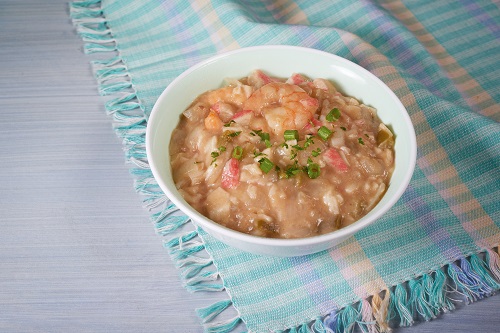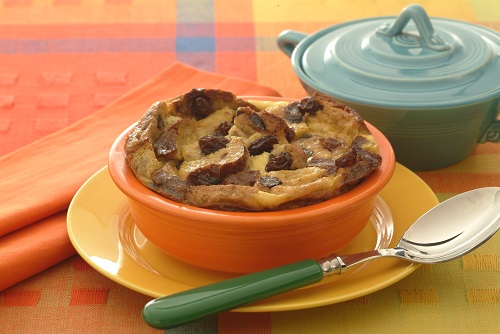Celebrating Kwanzaa with Kidney-Friendly Recipes
Kwanzaa is a winter holiday created in 1966 by Dr. Maulana Karena. The celebration honors the African American culture. It is celebrated from December 26th to January 1st each year. The word Kwanzaa comes from the Swahili phrase “matunda ya kwanza” meaning “first fruits of the harvest”.
The Seven Principles of the Kwanzaa Celebration
Kwanzaa is based on seven principles or “Nguzo Saba” representing aspects of African American culture. The principles are Unity “Umoja”, Self-determination “Kujichagulia”, Collective work and responsibility “Ujima”, Cooperative Economics “Ujamaa”, Purpose “Nia”, Creativity “Kuumba” and Faith “Imani”.
Celebrations include songs, dances, African drums, storytelling, poetry reading, and celebratory meals. Each night during the seven day holiday, a family member lights a “mishumaa saba” (candle) which is placed in the Kinara (candleholder).
Celebration Symbols
The Kinara represents ancestry and the seven candles (one black, three red, and three green), each represents one of the seven principles. The black candle representing unity is the center candle. This is the first candle lit on December 26th. The red candles representing Kujichagulia, Ujamaa, and Kuumba are placed in turn to the left of the black candle and the green candles representing Nia, Ujima, and Imani are placed in turn to the right of the black candle. Each night a candle representing the principle being discussed is lit. The number of total candles burning represents the principle that is being celebrated.
Mkeka
Other traditional Kwanzaa symbols include the Mkeka, which is a placemat symbolizing the historical and traditional foundation. It is believed that today stands on yesterday. All of the symbolic items are placed on the foundation – the Mkeka. Mazao (the crops) is represented by fruits, nuts and vegetables and symbolizes work. The Vibunzi (ear of corn) represents fertility. One ear of corn is displayed for each child in the family. Children are believed to be the future because they are the ones who will carry cultural and family values on to future generations. If there are no children in the family two corn ears are displayed on the Mkeka because adults are responsible for overseeing the children in their communities.
On day 6 of the Kwanzaa celebration, the Karamu feast is held. The Unity Cup or “Kikombe Cha Umoja” is used to perform a ceremony where each family member drinks from the cup to promote unity.
Kidney-Friendly Recipes to Celebrate Kwanzaa
There are no rules for food that must be served during Kwanzaa feasts and  menus vary based on family traditions. Having kidney disease doesn’t mean you can’t enjoy delicious food during your Kwanzaa feasts. Consider one of these kidney-friendly recipes: Spicy Chickpeas, Jambalaya, Spicy Seafood Etouffee or Shrimp and Crab Gumbo as the main dish at your Kwanzaa celebration, or if you are attending a celebration ask if you can bring a side dish such as Southern-Style Collard Greens, Gourmet Green Beans or Almost Mashed Potatoes. Finally, settle down and enjoy the celebration with family and
menus vary based on family traditions. Having kidney disease doesn’t mean you can’t enjoy delicious food during your Kwanzaa feasts. Consider one of these kidney-friendly recipes: Spicy Chickpeas, Jambalaya, Spicy Seafood Etouffee or Shrimp and Crab Gumbo as the main dish at your Kwanzaa celebration, or if you are attending a celebration ask if you can bring a side dish such as Southern-Style Collard Greens, Gourmet Green Beans or Almost Mashed Potatoes. Finally, settle down and enjoy the celebration with family and  friends while enjoying Warm Bread Pudding topped with Whipped Cream. Visit DaVita.com to find perfect kidney-friendly recipes for your Kwanzaa feast.
friends while enjoying Warm Bread Pudding topped with Whipped Cream. Visit DaVita.com to find perfect kidney-friendly recipes for your Kwanzaa feast.
Kidney Diet Concerns
While there are no specific foods that are eaten to celebrate Kwanzaa, celebratory meals are often higher in potassium and phosphorus because there are more foods available than at a typical meal. Select the fruits and vegetables that are lower in potassium. If nuts are included at your Kwanzaa feast remember to limit your intake (and take your binder) because of the phosphorus and potassium content. When in doubt about a particular food, use the 25% rule to modify recipes or portions. Ask your dietitian to help you determine if more phosphorus binders may be needed at your celebratory meals.
On the seventh and final day of Kwanzaa, Zawadi (gifts) are exchanged with immediate family members and guests. It doesn’t matter how you celebrate the holiday season as long as you share the time with family and friends.
Resources:
- www.history.com/topics/holidays/kwanzaa-history
- https://en.wikipedia.org/wiki/Kwanzaa
- https://www.foodnetwork.com/holidays-and-parties/packages/holidays/holiday-central-kwanzaa/kwanzaa–the-food-and-traditions
Additional Kidney Diet Resources
Visit DaVita.com and explore these diet and nutrition resources:
DaVita Kidney-Friendly Recipes
This article is for informational purposes only and is not a substitute for medical advice or treatment. Consult your physician and dietitian regarding your specific diagnosis, treatment, diet and health questions.

Recent Comments